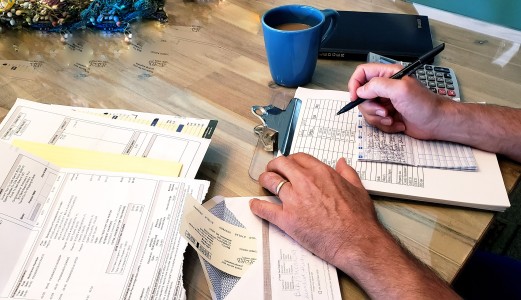
When your workplace income stops, your pension is designed to step in and support you financially. As soon as you turn 55, you can usually access any workplace or personal pensions you have. How you spend those retirement savings is completely up to you.
Many retirees choose to run to sunny escapes, either permanently or part-time. In fact, in our recent survey, 34% of wannabe expats stated that they plan to retire to Spain. However not everyone can afford to uproot their life in pursuit of warmer weather and some may even look at retirement as an entirely different adventure.
Budding entrepreneurs and business owners may choose to invest in their own business, using their pension savings to be their own lender. Which poses the question that many may not have previously considered: is being your own boss your retirement dream?
Changes in the labour market
The UK labour market has witnessed a growing wave of self-employment in the workforce, with those registered as self-employed rising from 12% in 2001 to 15% in 2017. While 45 to 54 year olds are the largest self-employed age group, it’s interesting to see that the fastest growing age group is in fact those aged 65 and over.
Explaining this shift to why more people are now self-employed is complicated. The Institute for Fiscal Studies suggests that self-employed people have lower wages than employed ones. However, almost a quarter of self-employed people transitioned from unemployment before starting their own business so this may explain the increase.
Interestingly many self-employed people reported higher levels of job satisfaction and lower levels of anxiety than those in full-time employment.
In the third episode of our Pension Confident Podcast, we chatted to Emma Jones MBE, founder of Enterprise Nation who explained that “lots of people aged 50 plus who are starting a business (are) taking their pensions out early (as) start-up funding”. These retirees are thinking “actually how can I use that pension to create the life I want for myself”. A sentiment we can see reflected in the data we see.
After decades of employment, it’s unsurprising that retirees would prioritise happiness over a higher hourly rate. Flexible working facilitates everything from childcare for grandchildren, to spontaneous city breaks.
Accessing your pension from 55
Why become a business owner in retirement? Well, anyone aged 55 and over is able to withdraw one-off or regular amounts from their personal pension. And whilst 75% of your pension pots are subject to income tax, 25% can be taken as a tax-free lump sum.
From your first withdrawal, your personal pension becomes a ‘crystallised pension‘, freeing up your investments and meaning you’re able to drawdown from your pension pot. If you’re planning on using your pension to fund your business you may have the following questions:
- Can I take my pension at 55 and still work?
- How much tax will I pay on my pension if I’m still working?
- Should I take a lump sum from my pension?
Remember, your pension is designed to provide income during retirement. Taking only your tax-free lump sum to fund your business leaves you with 75% to support the rest of your lifestyle. This means, that should your self-employed journey not be a success, you’d still have pension savings.
Pension savings vs. business loans
You’ve got a passion, and you’ve decided to turn that into your business. The first tripping point for many business owners is initial funding, for supplies and wages. Aside from Dragon’s Den backing, you’ll need to find some nest egg savings from somewhere to give you good cashflow. This means that you either need to wait and save, take out a business loan, or use your pension to support your entrepreneurial goal.
Research from British Business Bank revealed small businesses seeking bank loans reached a record low of 1.7% in 2017. In addition, British Business Bank found that many start-ups are now choosing to access alternative finance instead of traditional bank loans. Founders seeking equity finance increased by 79% and peer-to-peer lending increased by 50% during 2017.
When it comes to weighing up your options, pension-led funding can offer more control and flexibility than traditional loans. Without monthly repayments or rising interest to worry about you can explore all avenues of profitability. As your own lender, you call the shots.
3 steps to being your own lender
1. Making a business plan
Bright ideas are great, but how will it create income? Start by analysing your business’s potential strengths and weaknesses. This could be researching running costs, or hitting a monthly income target. Put this plan into writing, then into action!
2. Taking tax-free lump sum
You’ll need to have already amassed a pension that can support your retirement and start-up. Try the pension calculator to see how taking your tax-free lump sum would impact your remaining pension balance. If it’s looking low, you could try saving more first.
3. Keeping all your profits
Once you’re up and running the power (and profits) are in your hands. You may use profits to expand your business and hire more employees, or pay yourself back. How you spend your retirement pot is up to you.
Risk warning
As always with investments, your capital is at risk. The value of your investment can go down as well as up, and you may get back less than you invest. This information should not be regarded as financial advice.




